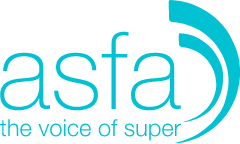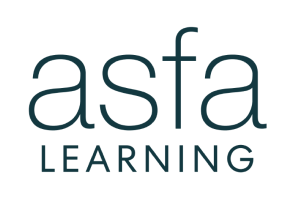The cult British sci-fi TV series Black Mirror had an eerily prescient episode called ‘Nosedive’ where a smartphone-addicted populace continually rated each other on their social interactions. That data stream ended up dictating all aspects of a person’s life.
It’s hardly far-fetched; anyone who has ever taken an Uber knows about its ranking system. China has already announced plans to develop a social “score” for its citizens, which can rise or fall depending on their actions—or infractions—rewarding them for good behaviour and punishing them for poor deeds.
The ASFA Spotlight on Member Engagement recently looked at how data can be effectively used in superannuation to drive optimal interactions with fund members.
During a panel session “Avoiding the Nosedive”, chair Thomas Reeh from AHC said that, for superannuation, technology development and regulatory concerns go hand-in-glove. “Really, it’s about how our industry can transcend fears about the collection of data and create apps and platforms that offer shared value,” he said.
So how can super leverage the experience of other industries to create mutual value and engagement? Reeh said it essentially comes down to what information the industry is trying to obtain and clearly demonstrating the benefit to the member in return.
Midwinter chief executive Julian Plummer was asked how his organisation leverages the experience of other industries.
“That’s a very easy question to ask but a very tough one to answer,” he replied. “We have a problem in our industry that only 20 percent of Australians seek financial advice and so something’s not working somewhere; trying to talk to them how to live a comfortable lifestyle in retirement is challenging at the best of times.
“But there is a shift in how to talk to them as we move onto digital devices. The busiest bank branch in Australia was the Westpac on the corner of Castlereagh and Martin Place in Sydney, which is now being demolished. The busiest bank branch is now the 333 bus from Bondi Junction to Edgecliff. The real challenge is how to be on that bus and communicating with your members.”
Plummer believes to engage with super fund members, the industry needs to avoid “ruffling their feathers”.
“We find that peer group comparison works very well. When I go into a superannuation website, one thing that really annoys me is using a budgeting calculator. You spend 20 minutes typing in all your grocery bills and your entertainment expenses and whatnot and then you go get a cup of coffee. When you come back and you get a 404 error because the website’s timed out. It was a calculator that led nowhere and did nothing. It had no call to action. It’s like going down a one-way street that hits a cul-de-sac. I think ‘well, what was the point of that?’.
“Having a set of tools that engages and doesn’t overwhelm with information I think is the key. Don’t ask them to fill out a full fact find. Don’t ask them to do a whole budgeting system and if you do get them to do that at least have the ability to save so they can come back, edit, create and modify that information.
“I think there’s been a big disconnect because we have calculators to the left hand side and we have your advice tools and your financial planning software on the right and then you have phone based advisers and face-to-face advisers and no one talks to each other. They’re all using different systems which all have different assumptions, and different outputs and different outcomes so the whole thing is just a mess.”
Peer comparison is a powerful tool. “We just ask for a postcode and from that we can start comparing each member to their neighbours and all of a sudden they start to get a little bit upset if they find out they’re earning less than Joe Blow next door. That’s when you can start having that conversation about advice and where you see yourself when you hit retirement.
Has superannuation shied away from delivering less-than-positive messages? “I prefer the ‘hang myself’ moment,” Plummer said. When I do a demonstration and get some tension in the room, I’ve got them. As soon as I get some emotions out of you I draw you in and we start using the software.
“It’s this indifference that’s hard to battle and so getting emotion from people and drawing them into the calculators means they’ll provide information on their own terms – and that’s a primary driver of people taking some action.”
Harald Lohe from Salesforce says the lack of trust in the market in financial services is playing a part. “We find having trust and a secure platform for customer data is probably the main priority we’re seeing at the moment.
“But we’re living in an age of intelligence; AI is a part of our daily lives, making what we use personalised, mobile and fast. There is a massive chasm between what organisations are delivering and what the customer expectation is.”
Lohe says foreign exchange (FX) is a good example of where data-driven apps and platforms need to have a lot of agility built in. Joshua Hicks from Pepperstone, which uses a Salesforce platform, says FX faces a lot of the same challenges as superannuation. “Our major differentiating factor is customer relationships – one-to-one journeys that make things as personal as possible.
“Like superannuation, we have this big pile of data sitting there and we can’t quite figure out how to make meaningful insights and how to action those in a really agile and efficient kind of way. People expect an experience that’s super personalised, that’s really tailored to all the data that a client expects you to be using. They expect you to already know as much about them as they let you know.
“We’ve taken a bit of what we call an intelligence omnichannel approach to engaging with our clients, working hard to meet them at every touchpoint. When you engage with a company for support the last thing a lot of people want to do is have to call in or send an email, to wait for a response. We’ve all experienced this a million times.
“We focused on opening up simpler channels, live chat, things like Facebook Messenger. Even now iMessage has a business unit so you can actually contact Pepperstone directly. Just little things like that streamline your client experience.”
So is there a line where the capture of data potentially becomes creepy?
“It comes back to ethics, principles and trust,” Lohe said. “Security and keeping data away from bad guys is key. If you have organisations that are focused on that it provides a very, very good platform to keep the data safe. If you’re working with an organisation that doesn’t have trust front and centre and practice it on a daily basis, you probably need to question why you’re working with those people.”
AHC’s Reeh asked about data insights to power segmentation. “You could have two 55-year-olds that are at completely different ends of the spectrum when it comes to retirement readiness,” he said. “I think there’s still way too much of the ‘Oh well you’re in this age band’ so you’re going to get a specific type of marketing message. How can super segment the data that’s available? How are other industries tackling the challenge?
Pepperstone’s Hicks said it’s a problem in FX marketing. “It’s complicated to pin down these tiny differences that can create micro segments. While these two people are the same age, live in the same place and have similar deposits, you really have to start looking at the granular details.
“Some of the things we look at are frequency of trading, what amounts and when they lodge; we combine that with where they live, what kind of account they have, what interactions they’ve had with support. We’re currently developing a way of basically inputting sentiment so we can track this during interactions and start to factor that into our formulas.”
Plummer commented that Midwinter runs a functio
n through an application programming interface (API). “It’s called the Retirement Comfortability Index (RCI). We leapfrog segmentation really because it’s all about best interest and doing what’s right for that particular member. Forget about all the other members. We’re concentrating on this one and this one alone. Like you said, this 55 year old is completely different to every other 55 year old on the planet and all we’re concerned about is him or her. We throw all the information we have about that member into the algorithm and it spits out an RCI out of 100. How well is this member prepared for retirement?
“It’s a percentage and so what you want to do is then start engaging with those members that are below 50 to say ‘look, based on what we have this is what we think your outcome and retirement’s going to be. You’re not going to be driving a Ferrari. It’s going to be a second hand VW’.
“The more information we have from calculators, or advice modules or the last time that member saw a face-to-face advisor builds up what you know about that person. Every time you push that information into the RCI algorithm you can actually look at the improvement over time.
“We try to steer clear of segmentation and look at a member in isolation as if they’re the only member that matters. I think in the light of the Royal Commission, that’s certainly the best way to go. Forget everyone else, concentrate on that one member like their life depends on it.” 
Data and consumer behaviour
In the face of cyberattacks and data privacy issues, are consumers taking more control over the information they provide through digital channels? Kim Anderson, the general manager of NAB Labs addressed how super could position itself better with members and the optimal way to innovate.
“With any innovation approach, we always start with what’s the insight? What’s the pain point? Then you go through these scaling phases of experimenting quite rapidly, seeing if it’s the right pain point you’re solving.”
“Is there desirability for your customers? Do you have a real commercial case for being able to build on this? Can you actually do it within your own organisation or do you need a partner to help you get there faster?”
Anderson pointed to NAB Labs’ partnership with realestate.com.au as an example. “If you’ve got a product that’s existed for a long time like home lending, you have a substantial amount of insight on that product.
“But when you move into a new way of doing home lending and moving into a space that you have not had any traction before, it takes a significant amount of time to really experiment and work through how you’re approaching the customer in a different way (and working out) how to use your partners to help you get there.
“In your organisation it’s important to have visionaries who are looking ahead, but also are challenging how you’ve done things before. If you continue to do things the way you’ve always done them you won’t be able to create that new traction, you won’t be able to create those new business models.”
In a world where people are able to share their information easily, what are the implications from a superannuation perspective? “We’ve been watching the UK on this front and there’s definitely a huge amount of education required to get consumers interested,” Anderson said.






